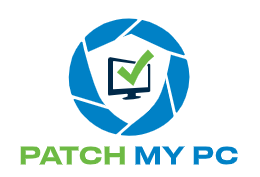Value For Money or How to Demonstrate the Value Provided by Insurance
Value For Money or How to Demonstrate the Value Provided by Insurance
Expert opinion
V4M (Value For Money) reinforces the duty to provide advice and transparency to policyholders, and makes it compulsory to measure their satisfaction. We take a closer look at V4M systems and the solutions used to implement them.
Creation date :
Nothing sums up the pleasure of working as an organizational consultant in the insurance sector better than the implementation of the Value For Money (V4M) systems for our insurance, medical insurance and welfare group customers! These are complex regulations (sometimes arduous, not to say unpalatable), made up of diverse and multifaceted requirements, which have to be interpreted and implemented with a threefold concern for compliance, workability and pragmatism!
The challenge is not to boast the best knowledge of regulatory texts, nor to impose ourselves as the exclusive interpreter of these texts, but rather to support our insurance customers in the design, deployment and monitoring of an efficient, cross-organizational V4M system, capable of demonstrating to regulators and policyholders the value provided by the insurance solutions we distribute.
V4M: What Exactly are we Talking about?
Widely circulated and often misunderstood, V4M nevertheless has a scope capable of profoundly transforming insurers' practices. Here are the main points of this revolution, already in practice since 2018:
I. Transparency Requirements
Insurers are now required to provide clear, detailed information on insurance products, including costs (intermediary remuneration), cover offered and exclusions. The aim is simple: to enable consumers to assess the benefits of taking out an insurance product more simply and effectively, even for those without financial, actuarial or legal knowledge.
Transparency not only helps consumers make informed choices, but also reminds insurers of the importance of justifying the value of their offers.
II. Quality and Performance Standards
Companies must develop performance indicators linked to customer satisfaction, the quality of services provided and the cost/benefit ratio of their products. These quality standards (imposed by regulators such as the Autorité de contrôle prudentiel et de résolution (ACPR) in France) encourage insurers to improve their operational efficiency and better meet customer expectations (i.e., more quickly, more consistently and by monitoring the quality and conformity of responses).
III. Framework for the Duty to Advise
The V4M regulatory framework reinforces insurers' duty to advise by specifying advisors' responsibilities towards their customers. This means that professionals must assess customers' specific needs and recommend suitable products that offer a good cost/benefit ratio.
In addition, insurers are now required to rigorously document the advice process to demonstrate that they have acted in their customers' best interests.
IV. Sanctions and Liability
Insurers who fail to comply with V4M standards may be subject to sanctions imposed by the regulatory authorities (the ACPR in France). Sanctions can take the form of financial penalties and/or reputational damage (sanctions can be publicized using a Name & Shame approach, the effectiveness of which no longer needs to be proved).
V. Ongoing Adaptation of Insurance Offers
Increased responsibility encourages insurers to adjust and review their business, underwriting, and claims practices, and to adopt a proactive approach to constantly evaluate and improve their offerings.
VI. Feedback Management and Adaptation
V4M regulations encourage insurers to set up customer feedback systems to adjust their offers in line with feedback, thus fostering a cycle of continuous improvement. One benefit is that this requirement can enable insurers to remain competitive over the long term, by regularly ensuring that their products are in line with market needs.
VII. Salvation through Innovation?
In a particularly tough environment for many lines of insurance - with the number and average amount of claims rising sharply, while the capacity for price increases now limited, as evidenced by the rise in uninsured businesses - V4M can act as a welcomed stimulus to innovation.
Indeed, insurers now have a vested interest in developing products that not only comply with regulatory and legal requirements, but whose value is perceived by consumers. At Inetum, we are the first observers (and often the actors) of insurers investing in digital technologies and solutions to improve customer experience and value for money.
V4M : What Regulatory Framework?
The following is a brief overview of regulations designed to protect policyholders and savers, combat products with excessive or unnecessary margins, and promote healthy competition through quality.
In Europe
I. IDD (Insurance Distribution Directive)
This is THE text that gave rise to the notion of V4M (among other things) in the insurance sector. In a nutshell, DDA is the general framework that sets out the following requirements in particular:
- The products distributed by insurers must be adapted to the customer and deliver value.
- Assessments of the costs and benefits for the end customer must be carried out systematically, first when the insurance product is designed and then on a regular basis during its marketing.
- Each insurance product must be subject to dedicated governance (the famous Product Oversight Governance) and periodic review.
II. PRIIPs Regulation (Packaged Retail and Insurance-based Investment Products)
Before the (IDD), life insurers had a preview of the challenges related to transparency, comparability, and Value for Money (V4M) applied to their savings products. Thus, PRIIPs imposes:
- The provision of a Key Information Document (KID) for each life insurance product.
- Transparency regarding the fees, performance, and risks of each life insurance product.
- Comparability between investment products, including unit-linked life insurance contracts.
III. The work of EIOPA (European Insurance and Occupational Pensions Authority)
As the regulatory body responsible for overseeing the insurance and pensions sector in the European Union, EIOPA's role is to ensure stability, protect policyholders and harmonize rules.
In 2023, EIOPA published a V4M supervisory framework for long-term investment products (including life insurance and retirement savings contracts) :
- Value is assessed through the prism of fees, expected performance and services associated with the insurance product.
- Structured self-assessment of products by insurers, with comparative indicators, is encouraged.
In France
I. Periodic Review of Products (Article L.132-27-2 of the Insurance Code)
This article of the Insurance Code is directly derived from the transposition into French law of the IDD directive:
- Obligation for insurers to regularly review their products, particularly in terms of cost, performance, and meeting customer needs.
- This obligation applies to both new products and products in stock.
II. ACPR Regulation / Recommendation 2022-R-01
Until now relatively silent on the V4M issue, the ACPR made a significant impact with recommendation 2022-R-01, which concretely resulted in the obligation for life insurers to eliminate numerous unit-linked contracts (UC):
- Strengthened expectations in terms of value created for the client, particularly regarding the fees of unit-linked life insurance.
- The ACPR invites insurers to clearly justify the fees charged and to ensure an objective comparison with market alternatives.
- The regulator's stated objective is to limit UCs with little added value or those that are too heavily loaded with fees.
III. Pacte Law (2019)
The PACTE law, which enabled the establishment of the PER (Retirement Savings Plan) with an architecture promoting fee transparency (notably due to the obligation to provide prospects with a standardized information document presenting the costs), also aligns with the same dynamic of transparency and performance in the service of the client.
How are Insurers Transforming in Response to the V4M Regulation?
Many European insurers, particularly in France and the United Kingdom, have launched various technological initiatives to comply with regulatory requirements regarding Value for Money. These efforts aim to enhance the duty of advice, transparency of costs and commissions, comparability of insurance products, and the quality of pre-contractual information.
Monitoring the Obligation of Advice
- Digitalization of the Customer Journey: insurers are adopting digital tools to collect and analyze customer needs, ensuring an optimal match of the products offered.
- Enhanced Training for Distributors: training programs are being implemented to ensure that distributors understand and apply the principles of V4M, especially for complex products like structured products.
- Monitoring and Traceability: information systems allow for the documentation of each step in the advisory process, ensuring compliance with regulatory obligations.
Transparency on Costs and Commission
- Standardization of Pricing Information: insurers publish standardized documents detailing entry and recurring fees, making it easier for clients to understand.
- Look-Through Approach: this method allows for the identification of fees associated with underlying assets, providing a comprehensive view of the costs related to insurance products.
- Prohibition of Transaction Commissions: measures are taken to eliminate commissions received during portfolio transactions, thereby reducing potential conflicts of interest.
Comparability of Insurance Products
- Online Comparison Tools: digital platforms enable customers to easily compare the features and costs of various insurance products.
- Use of Benchmarks: insurers assess their products against market benchmarks, ensuring their competitiveness and relevance.
- Streamlining Product Ranges: products that offer poor value for money are withdrawn from the market, thereby improving the overall offering for customers.
Enhancing Pre-Contractual Information
- Standardized Information Documents: insurers provide clear and concise documents summarizing the essential features of products, in accordance with European directives.
- Increased Transparency on Fees: information on costs is presented transparently, enabling clients to make informed decisions.
- Integration of Sustainability Preferences: clients' sustainability preferences are considered when proposing products, thus aligning the offerings with the clients' values.
Technological Innovation
- Artificial Intelligence (AI): AI is used to personalize offers to closely match the needs of policyholders, detect fraud, and improve operational efficiency.
- Big Data and Analytics: analyzing large amounts of data allows for refined pricing, better understanding of customer behaviors, and optimized products.
- Integrated Digital Platforms: all-in-one solutions facilitate contract management, communication with clients, and regulatory compliance.
Summary
In order to offer transparent, competitive products tailored to customer needs while complying with regulatory Value for Money requirements, advanced insurers are engaged in a race to renovate and industrialize their core systems into integrated, modular platforms that enable the automation of enriched product information documents and real-time monitoring of regulatory compliance.
These industrial platforms, inherently open and interoperable, integrate all activities and processes operated by insurers with their various partners, from the distribution and underwriting of insurance products to their operational management. This includes financial flows, both technically related to insurance operations and linked to the expense ratio, such as commissions paid to intermediaries.
Modularity is also a fundamental feature of these platforms, as Value for Money challenges can vary over time. For instance, which product offers the most "value" in the face of climate change: a traditional UC product with particularly low fee structures, or another unit of account that promotes the mobilization of savings to finance the real economy, especially innovation, energy transition, and reindustrialization (aligned with the Green Industry Act), but with a heavier fee structure?
Contact : Jérome Rave


